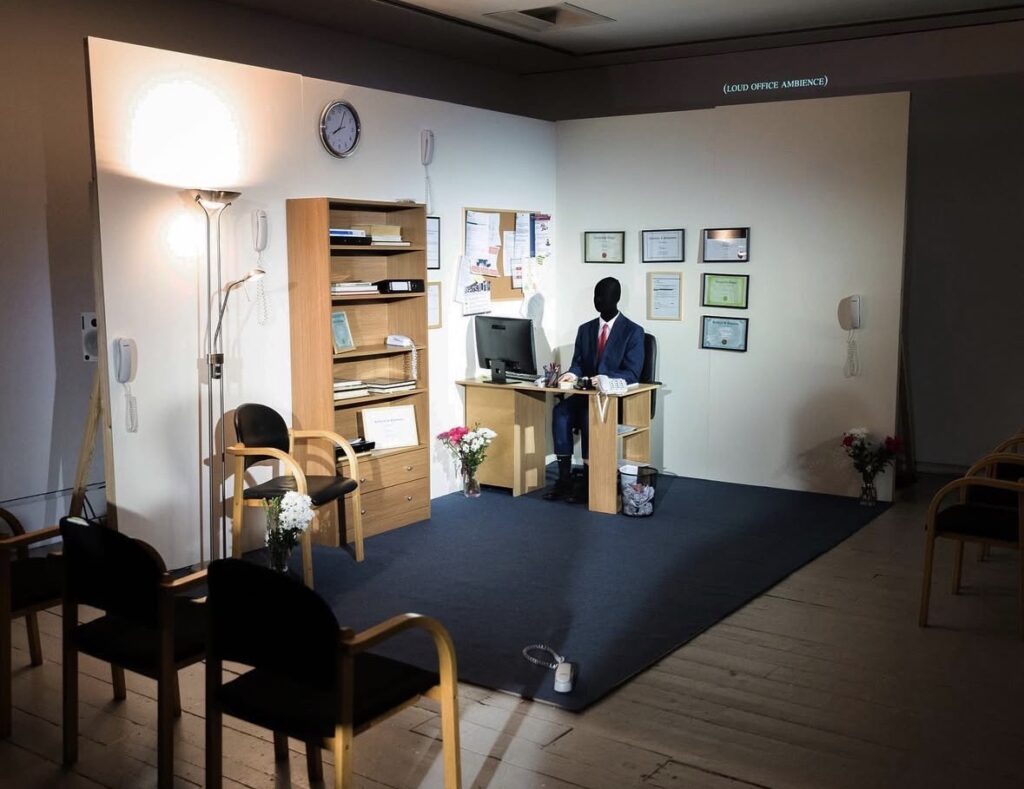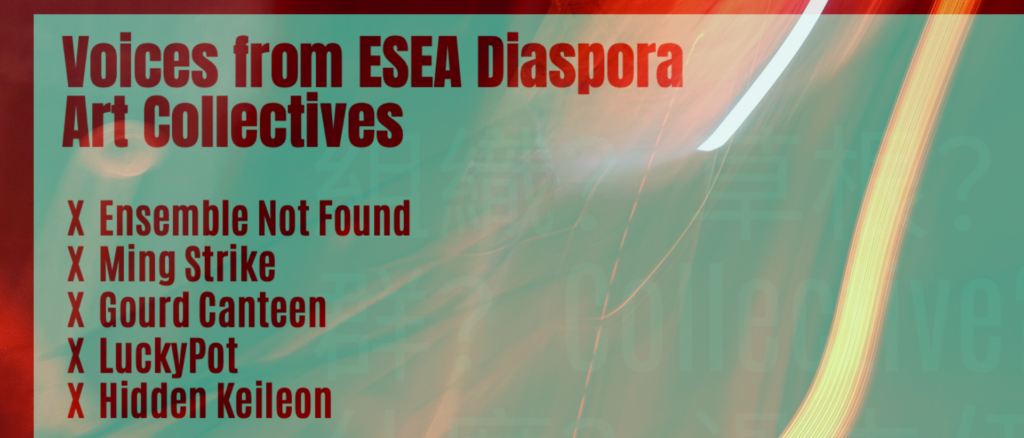Pre-Submission: Fully Fledged tight guard breeding HIDDEN CAMERA (LEAKED) – PART 1/2 | an*dre neely
This work is part of a series of co-commissions by performingborders and the project performance, possession + automation. This commission is one of three from our open call for experimental writing.
This work was made in collaboration with Melanie Sien Min Lyn.
A set of relations is that which forms a network. A network is that in which subjects are linked in order to share resources. Resources are that in which we build value. Value is that in which the market is predicated. The market is that in which we trade and accumulate Capital. Capital is that which forms Power. Power is that which is enforced by Authority.
There are 49 research projects seeking to develop border technologies being funded by the EU in its current budget cycle (2021-27). The spending on border security totals €34.9 billion. Some of the main focuses of these projects are the growing market of Artificial Intelligence and Border Automation, and Biometric Identification and Authentication. Frontex, the European Border and Coast Guard Agency, was created in 2005 as part of efforts to control migration flows and increase border security in the EU’s Schengen Area. Its budget was just above €6 million. In the current budget cycle, it will receive €5.6 billion – a 13200% increase in budget over less than 20 years. According to data by the European Defense Agency, European Defense spending in 2022 reached a record of €240 billion, and marked its eight year of consecutive growth. This is an increase of 1256% compared to its previous budget cycle.
When I first learned the word ‘tea’, in English, I always had to think of Lipton’s Ice Tea – my then favourite soft drink – and reach the meaning of ‘tea’ through exclusion. This was the process my brain needed to go through, to reach the meaning-outcome. It’s how we memorise: we see, we repeat, we find a logical path that makes sense to us, and we train it until it’s effortless. It’s how we memorise alphabets and new languages as adults. This is still how we teach babies to walk, eat or talk – show, trial, repeat. I remember my teachers often preaching about the importance of learning, instead of simply memorizing. This wasn’t so much an appeal to criticality, to question why, as it was simply for knowing the how, knowing the process with which an outcome was reached. To memorise is simply to know an answer, to learn is to know the steps that lead to it.
Biometric technologies, specifically fingerprint recognition, gained traction in the 90s, in forensic and law enforcement investigations, or as access to high-security environments. In the 2000’s it made its way to time and attendance tracking at work, security accesses, or border control. By the 2010s, biometric technologies like fingerprint, iris or facial recognition and scanning became more common in everyday applications to confirm identity, such as to unlock a screen, approve a contactless purchase in a smartphone, or to cross automatic gates in an airport. The growth of Artificial Intelligence has renewed the possibilities of biometric research. A standard feature in many of today’s devices and systems, these technologies are also used in camera filters – such as on Instagram, Tiktok, or Zoom – and in AI portraits, particularly those which mimic ageing, “gender-swap”, or alter facial features in other significant ways.
Authority is not that which authors, but that which controls. Control is that which orders, limits or rules something, or someone’s actions or behaviour. To order is to give an instruction, order is that which arranges or disposes of people or things in relation to each other according to a particular sequence, pattern, or method. A limit is that which restricts, which creates edges. A rule is that which enforces cohesion. A behaviour is a cohesion of actions, and an action is that which we do. Doing is that which we are, which is that which forms communities, which is that which forms mutuality, which is that which forms habits, which is that which forms practice.
Biometrics includes physical features as well as behaviour characteristics. TRESPASS aims to use these for enhanced security, and detection of falsified documents. IBorderCtrl, in which AVATAR plays a role, sees non-EU travellers pre-submit their breeder documents, have them checked by an AI-powered scan, and then interviewed by an AI border guard (AVATAR) with an inbuilt emotion recognition technology, or, Automated Deception Detection System (ADDS). Projects like TRESPASS, or IBorderCtrl, do not aim to only create large databases of scrapped biometric data in order to recognise, authenticate or identify people. Categorization and automated organisation isn’t profitable in itself. Both projects state their clear goals for detection and prevention – TRESPASS aims to detect and prevent attacks to security, while IBorderCtrl aimed to detect lies told to border guards. The edges between prevention, detection and prediction are blurred, and prediction is the market of Surveillance Capitalism. Predicative tools are widely used in most mobile phone apps, and are the algorithms responsible for the automated curation of our ‘timelines’ across platforms. Confirmed predictions form patterns and patterns form groups. Groups can be mass-influenced.
Soft power is soft, it is silent, undercover, attractive. Soft power pulls. It doesn’t kick your door in, but it seduces you to let it enter. Soft power is manipulative, it shapeshifts. Soft power is soft, it is slick. Soft power is symbolic, it is cultural power. Soft power is academic, it is artistic. Soft power is the small font at the end of this text stating it is supported by the Arts Council England and the Arts and Humanities Research Council. Soft power is entertainment. Soft power is in universities, in theatres, in museums, it is in churches, in TVs, stadiums, companies, in foundations. Soft power is omnipresent, it makes you cum when and where it wants you to. Soft power is Biennales, it is Eurovision. Soft Power is Cool Britannia and Swedish Pop. Soft Power is Eurodance. Soft Power is French New Wave, it’s the gay sex club as national heritage.
AI finds instructions and patterns in data so that it can acquire skills. The success and accuracy of AI is largely dependent on the amount of sources it can pull from to teach itself, to run trials and tests, to categorise. The EU collaborates with Microsoft, Google/Alphabet Inc., Apple Inc., Siemens, IBM and Accenture for biometric data scraping. Beyond the more obvious public facing ones which have a direct connection to end-users, Business-to-Business corporations such as Siemens and IBM have a monopoly on European private and public healthcare, holding the health data of patients of the National Health Systems of Portugal and the UK, as well as the Charité and Vivantes in Germany, amongst others. As part of its services, Accenture offers Social Media content moderation, including for Facebook/Meta.
Automation creates an illusion that the material and formal conditions in which an outcome is reached, have ceased to exist. When I get used to a movement, it erases my conscience of the muscles that I need to use to realise it. When a task becomes familiar, I forget about each micro step that I need to take for its conclusion. I don’t think of Lipton everytime I say ‘tea’. I don’t think about the form and shape of a word as I say it. I don’t think of how my fingers bend and my wrist contracts when I grab the mug. It happens automatically, in the background, unconsciously. I trust my internalisation of that practice, and I trust it because I’ve done it, and because I’ve seen it being done around me, over and over again.
A pattern occurs when one or more symbols, actions, words, or expressions repeat themselves in a more or less structured way. It is a blueprint for sameness. Groups formed by patterning, are groups that replicate sameness. Predictive analysis is rooted not only in prediction, to predict, but also in predictability, that of being predictable. Artificial Intelligence maximises the probabilities and statistical antecedents of an outcome being successful. It needs history, databases, archives, and it needs them to replicate themselves. AI needs a village, an army. It needs body language, speeds of movement, walking styles. It needs faces and its expressions, it needs emotions, a range of behaviours, vocal and textual communications, it needs reactions. It needs variety that it can merge into a multiplicity of sames.
Soft Power is power, it pounds. It is that which precedes action. Soft power finishes your sentences, it knows what you want before you could even ask for it. Soft power is power, it pins. It brings you together. It is that which is inside you before you even considered letting it in. Soft power is power, it pangs, it pains. Soft power, it pegs. It makes you one of many, until you are many of one. Soft power is power, it pulls. Soft power is power, it shifts. It is manipulative, soft, slick. Soft power is power, it parks, ammunition ready, assembled guns. Soft power is power, it tanks, so formed, reserved.
Projects like D4FLY, Trespass, AVATAR or iBorderCtrl, amongst others, make evident the geopolitical vectors through which power is channeled and directed. What for ones is a marketed convenience or a helpful invention, is another hurdle, another obstacle, for those that were already at the ungrateful end of the duality. In D4FLY, the border becomes mobile and individuated, it enters coaches, boats, trains – it allows for the european traveller to remain peacefully in their seat, as others are actively chased and searched. The small bit of agency, that of walking towards a border, that of facing the materiality of a border – with its glass, metal, its document readers, its cameras and its guards – is taken away; what’s left is just a waiting, an invisible border that forms just for one’s exclusion, a vapour, an impalpable mass that solidifies around the surface skin of certain bodies and declares them as non-belonging. The process of segregation is further hidden from the sight of those who are allowed in. When the border automates, then it becomes symbolic, immaterial. Its purpose is kept, in the shape of a formula that can be repeated, over and over and over again, forever, a formula that never stops, a pattern that spreads, a cycle that creates its own reality, and multiplies it. But the material effects and violences of the border become increasingly harder to perceive; those which it excludes, which it rejects, hurts, kills, become almost invisible, almost not human at the eyes of the army of sames, not bodies, immaterial, ghosts.
Soft power is soft, it is slick. Soft power is smooth, it is slender. It slides in, no stops, no ifs no buts. Soft power is sexy, it sells. Soft power is smart. It is servient, sweet, it sucks you in and sucks you off. Soft power swallows, it gargles, it shows you that for which you lust. Soft power shapeshifts. Gaslight, gatekeep, girlboss. Soft power shafts, from the stem to the stand. Soft power is soft, so soft, still, soft power slaps. It spanks. Soft power slams. Soft power is severe, it storms. It ambushes, it sieges, it strikes. Soft power slaughters. Soft power starves. Soft power sees, it witnesses, it waits, it is patient. Soft power is silent, it savours its slays. Soft power is sadistic, but sometimes, soft power suffers… or at least it seems to, for show. Soft power is soft, it is slick. Soft power is smooth, it is slender. It slides in, no stops, in the tightest of splits. Soft power is tight, but its tightness is soft. It is sensitive, tender, soft. Soft power is soft, so soft it shapeshifts, like a cloud.
an*dre neely (‘93) is an artist working with performance, text and spatial practice. Their work explores the materiality of labour and collaboration, intimacy and affect, authority and surveillance, and how they manifest in physical and digital space.
Their readings and performances have shown at Ballhaus OST, Sophiensaele and Berlinische Galerie (DE), Artsadmin, The Yard Theatre, Buzzcut/Tramway Glasgow (UK), ArkDes/Moderna Museet, MDT (SE), Warehouse9 (DK) and Teatro da Politécnica (PT). They’ve published with Montez Press, SomethingOther, the Live Art Development Agency, Siobhan Davies Dance, and the Hebbel-am-Ufer Theater. an* is a recipient of a 23/24 Tanzpraxis Stipend, by the Berlin Senate for Culture. Parallel to their artistic practice, an* works as a dramaturg and facilitator and since 2023 is the Associate Producer for the MA Queer Performance, at Rose Bruford College (UK).
This work is commissioned by performingborders and performance, possession + automation. Supported by Arts Council England, Arts and Humanities Research Council, and Necessity Fund.
Main image credits: Still from Fully Fledged tight guard breeding HIDDEN CAMERA (LEAKED)



